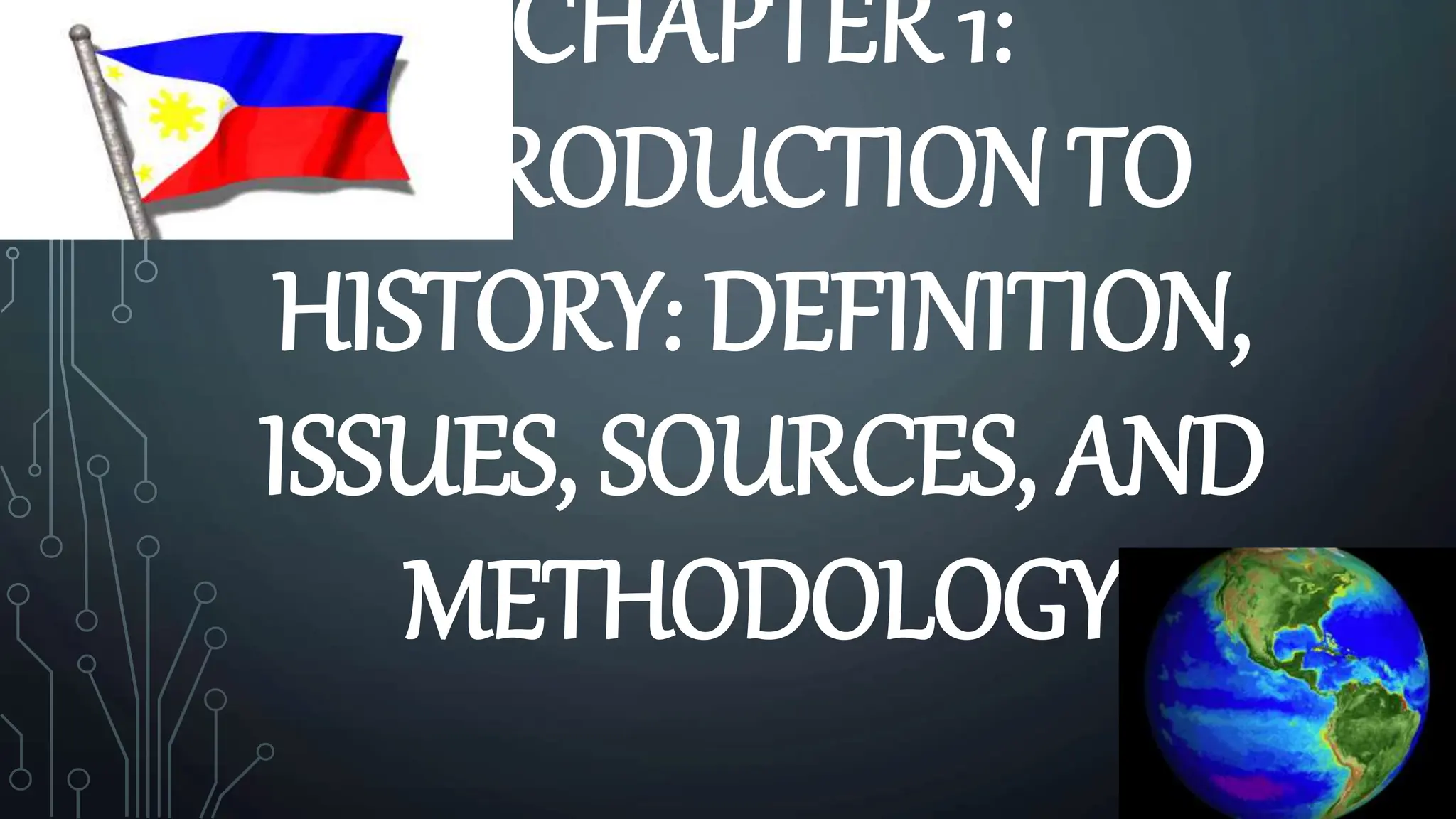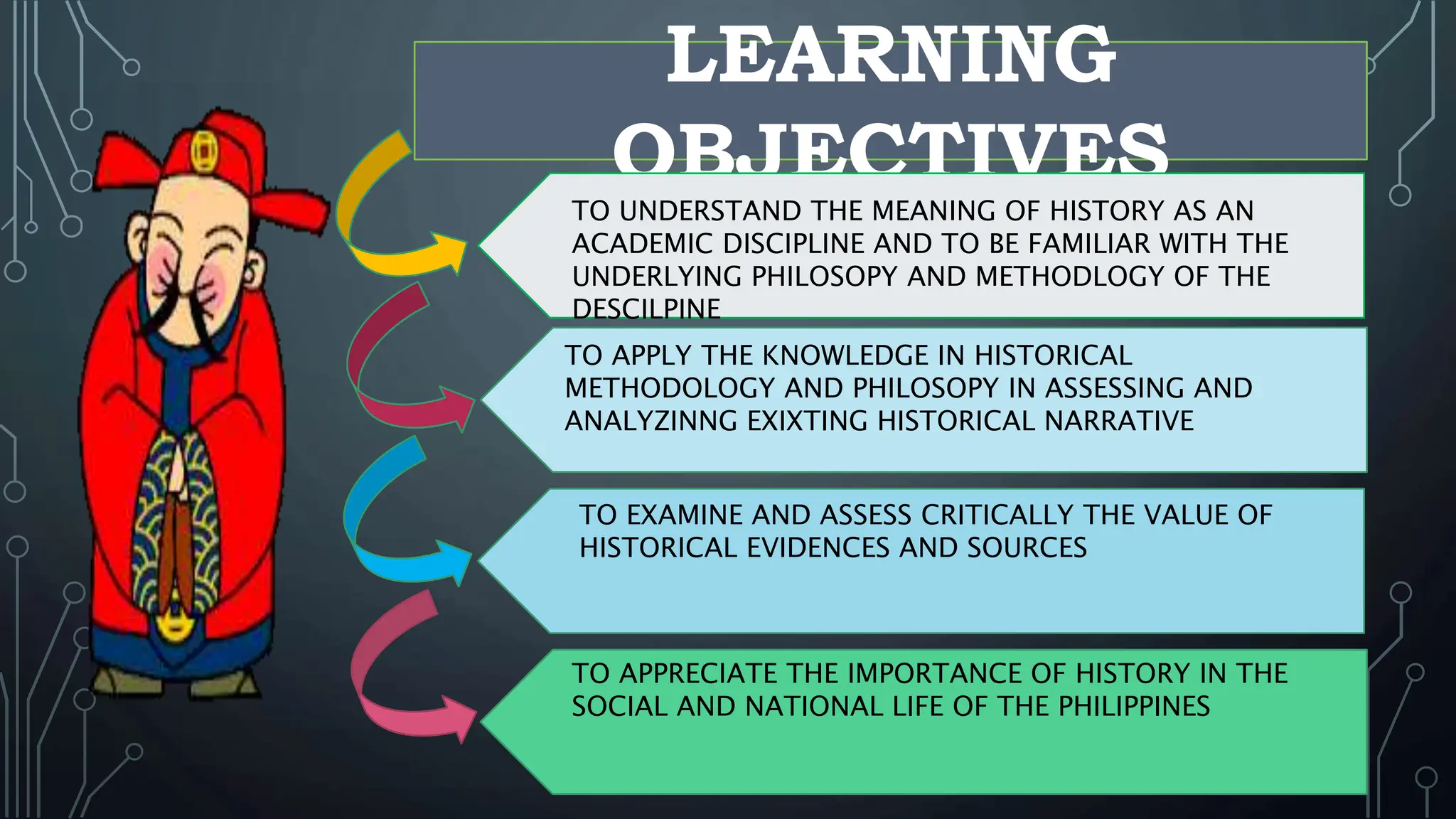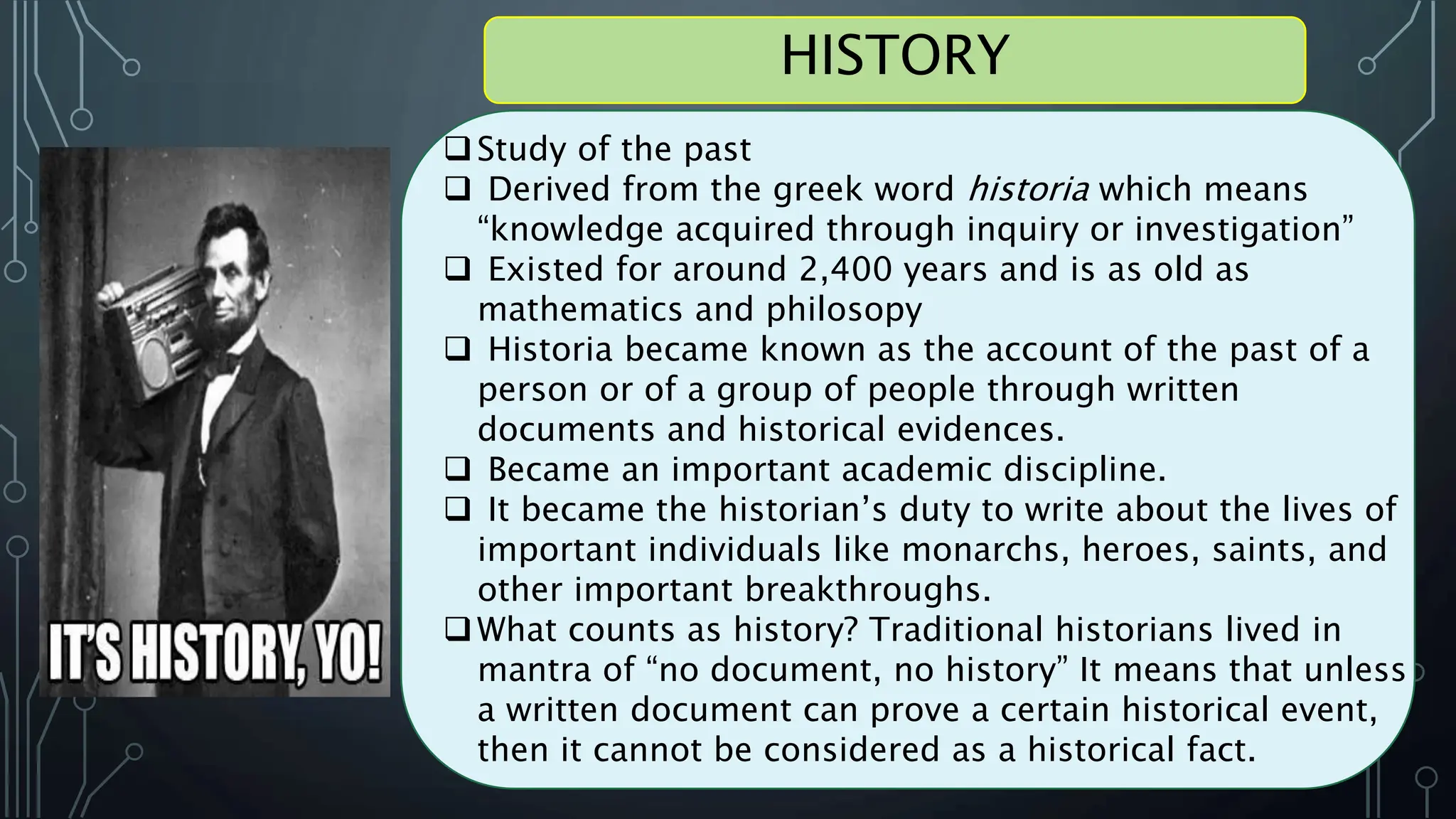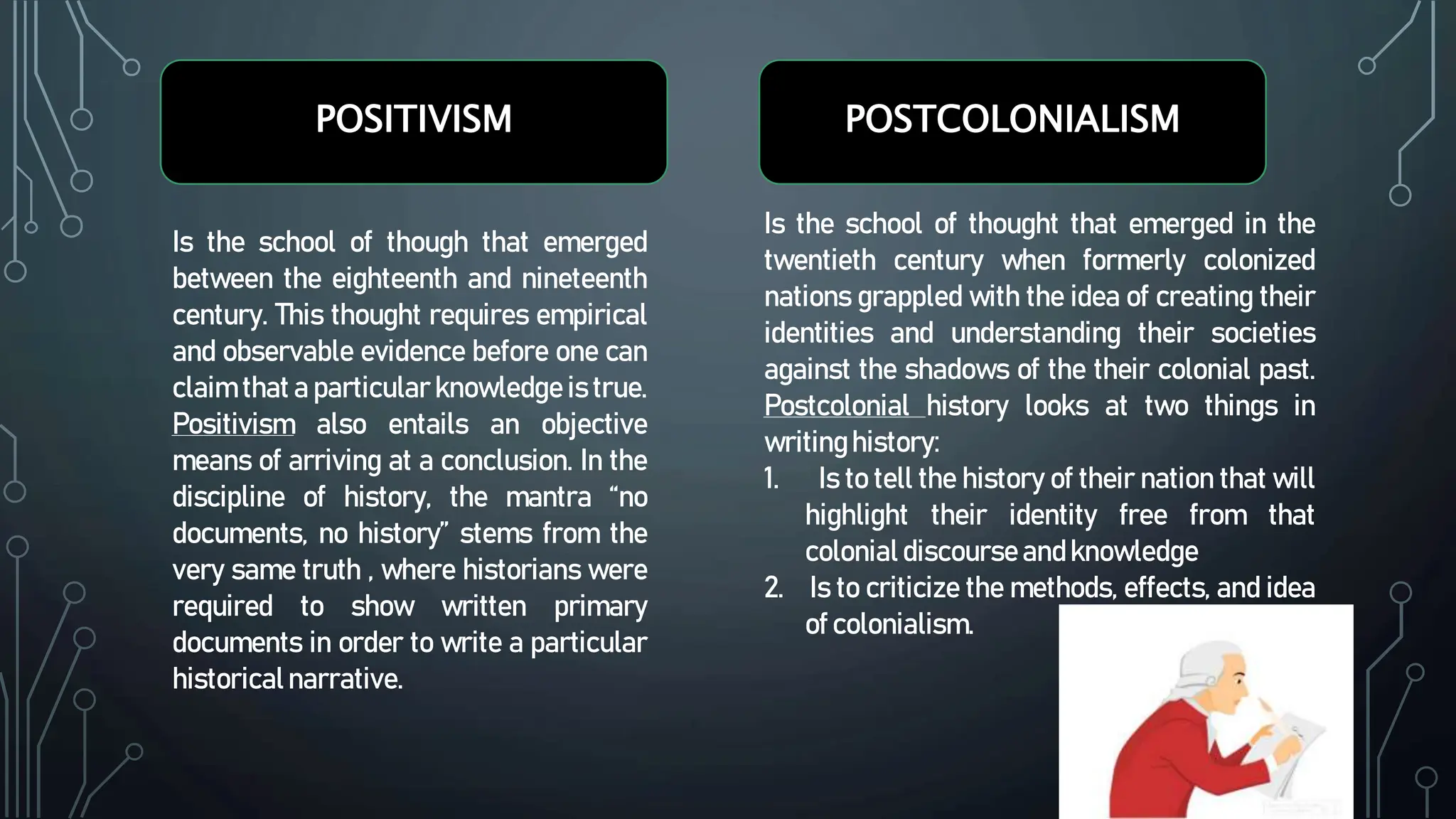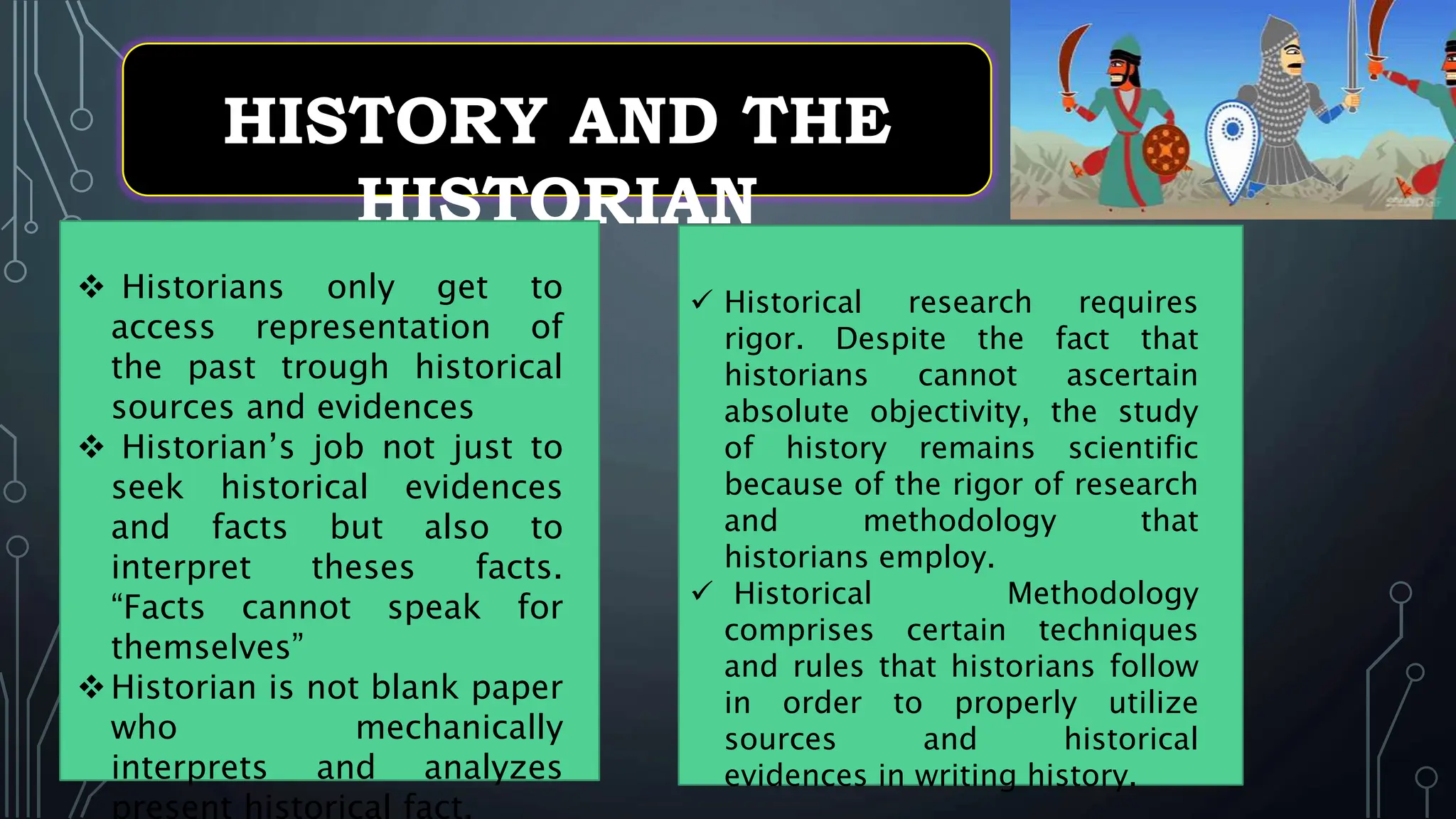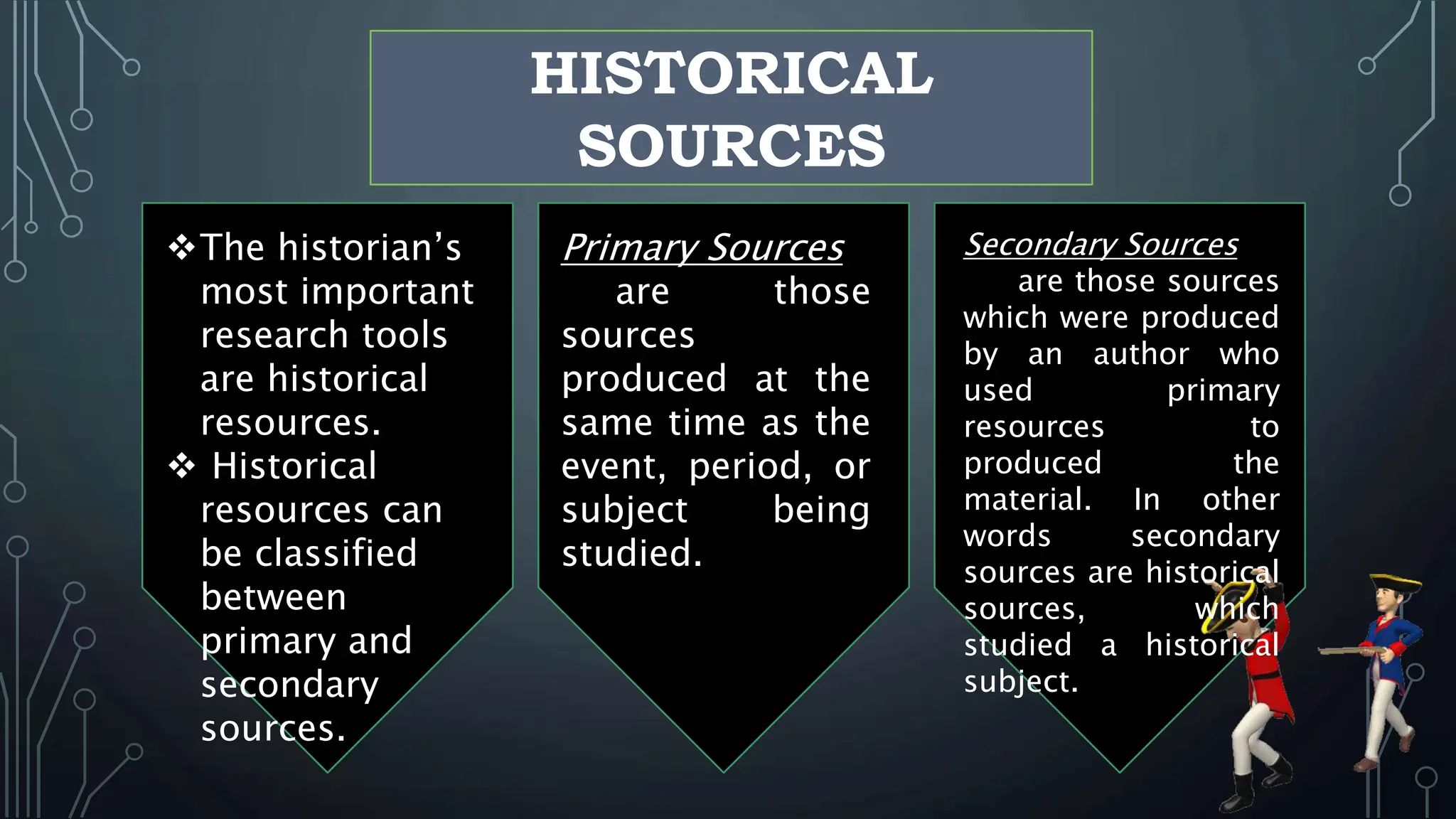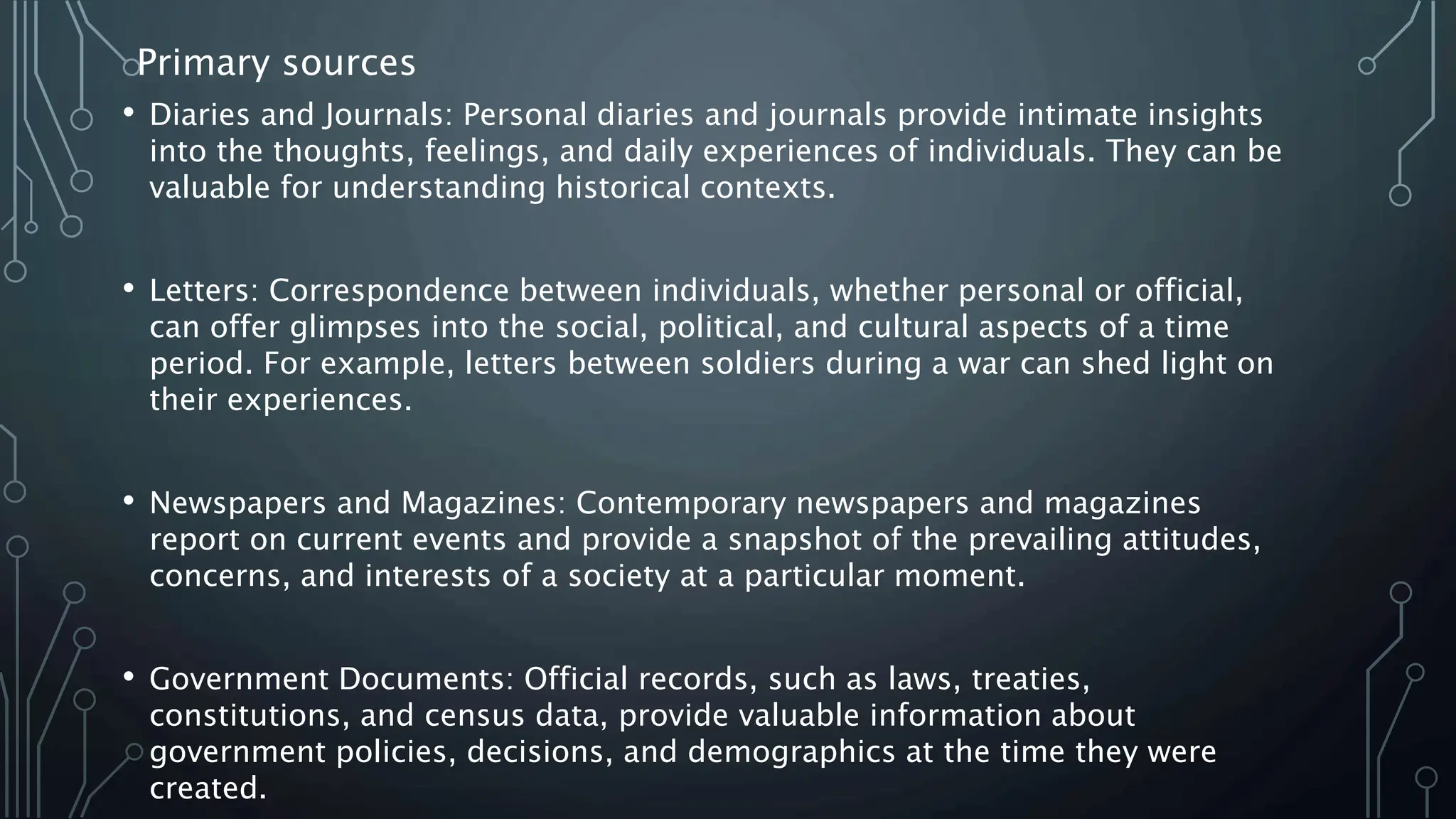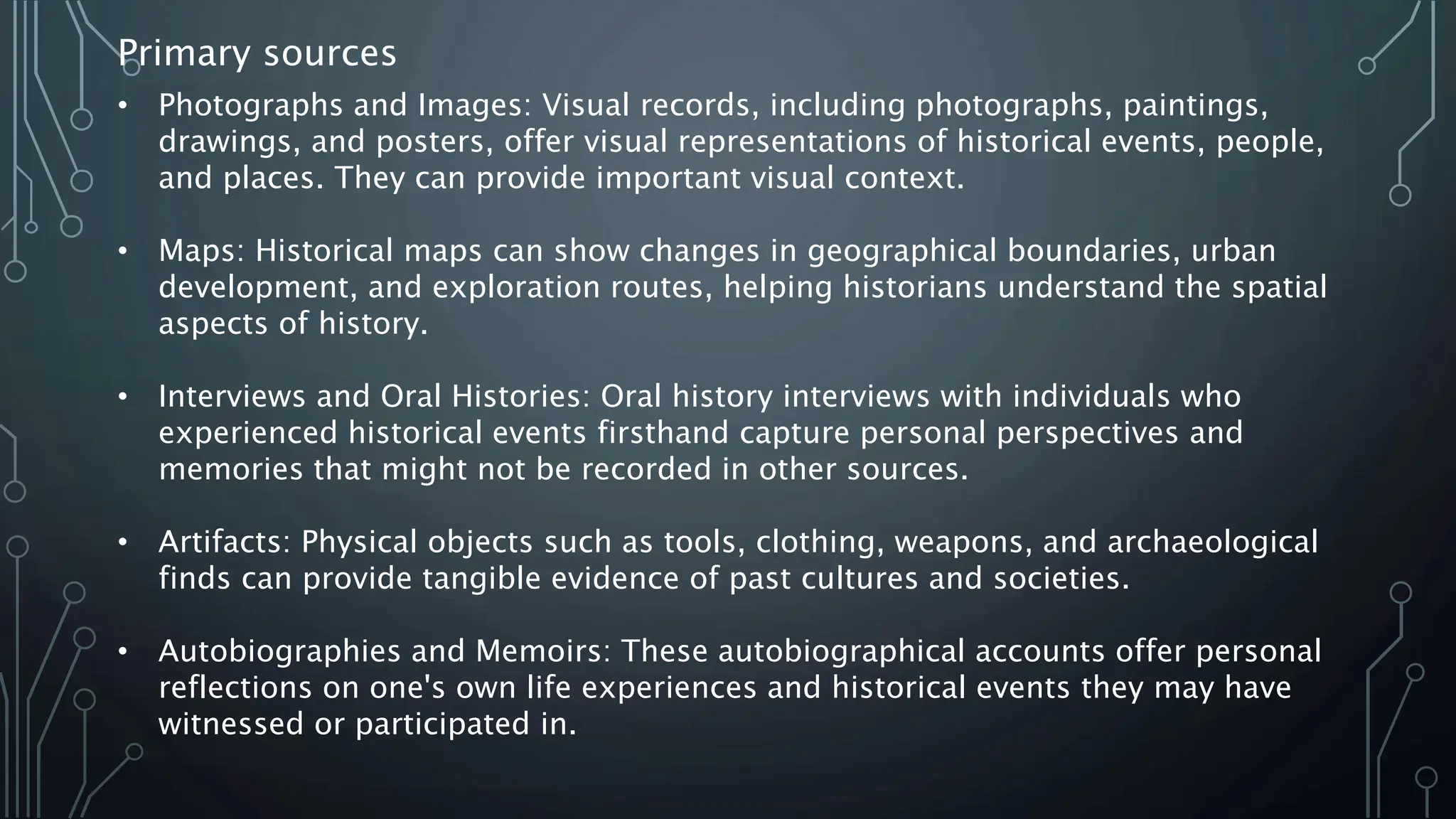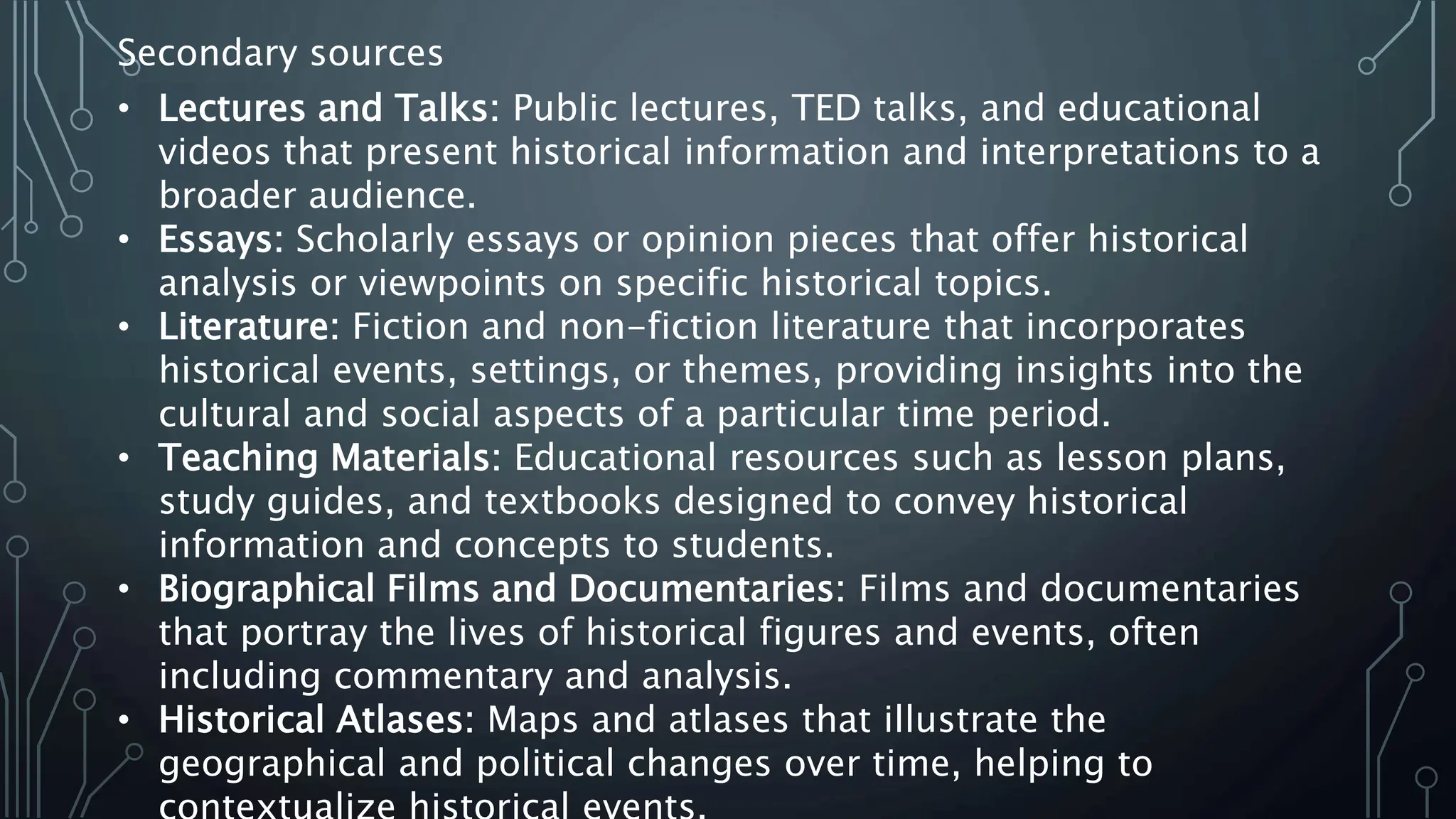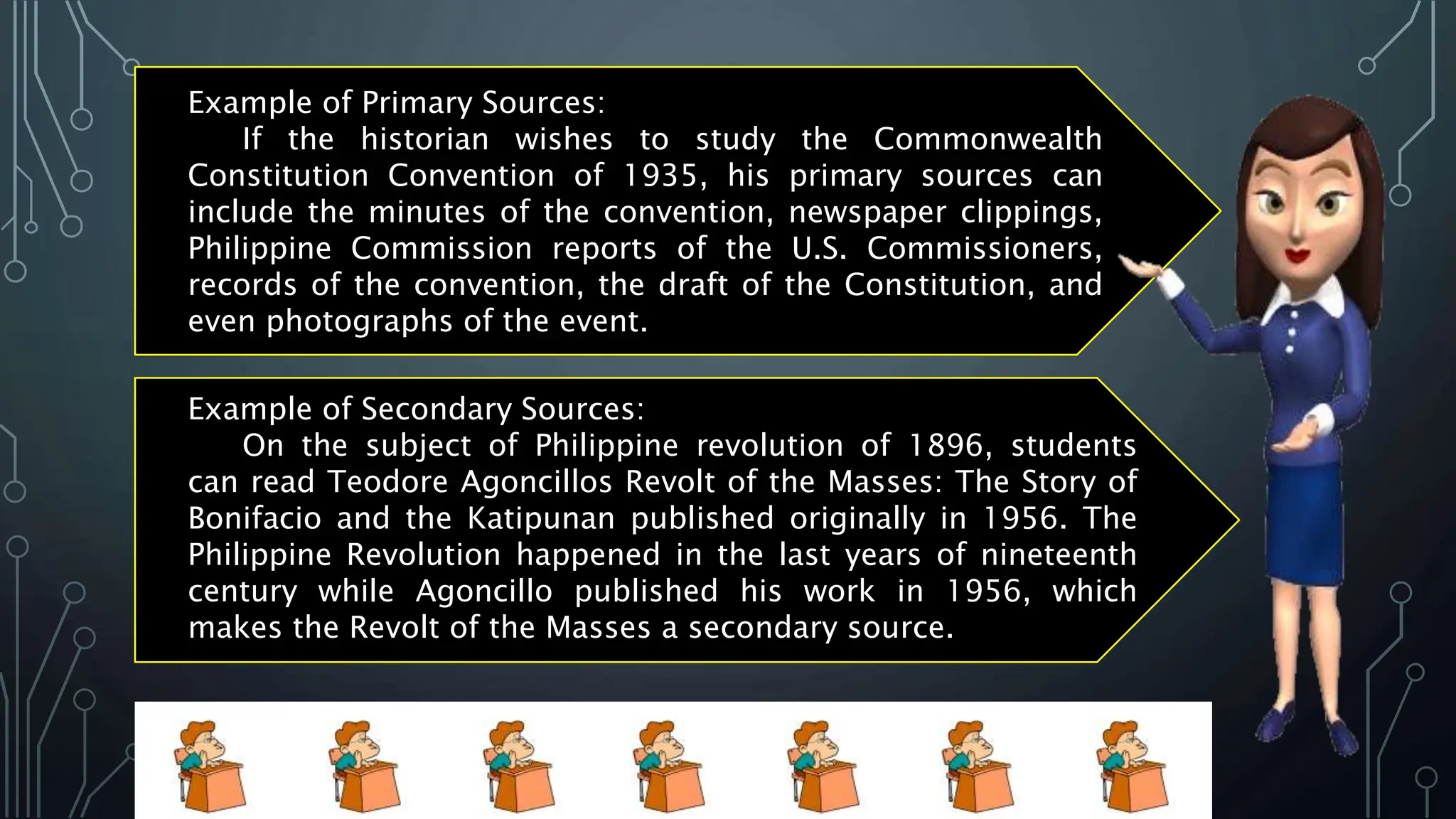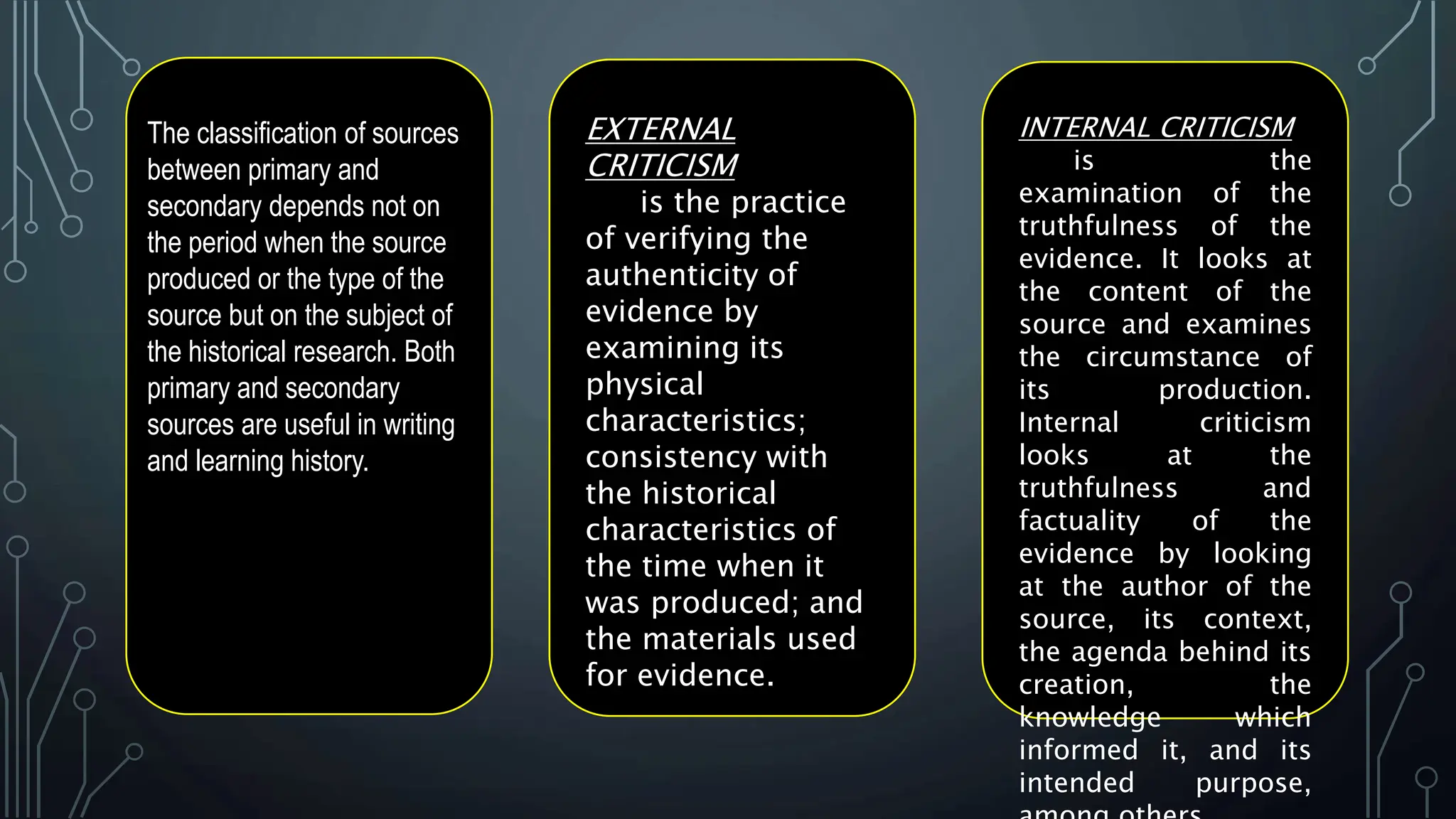This document outlines key concepts in the study of history as an academic discipline. It discusses the definition of history, emerging schools of thought like positivism and postcolonialism, historical sources and methodology. Historians study the past through primary and secondary sources, applying rigorous analysis and interpretation while acknowledging their own perspectives. The goal is to understand past events in context and appreciate history's role in society.
